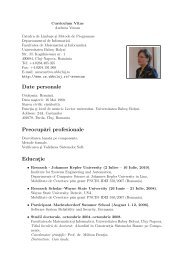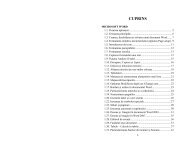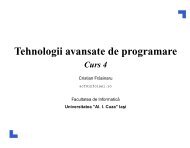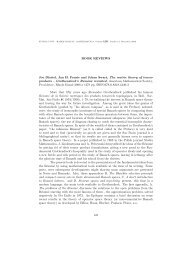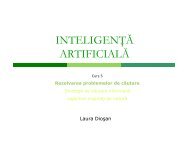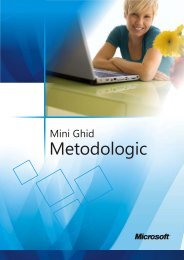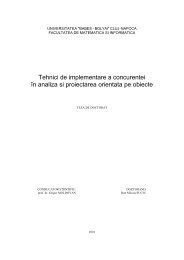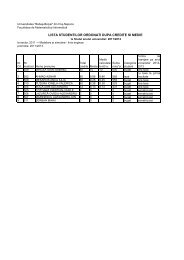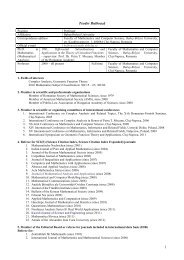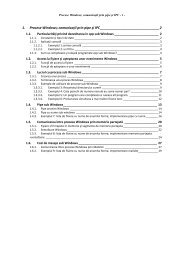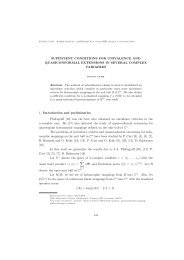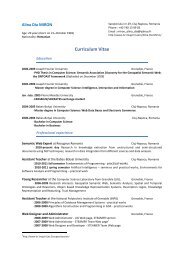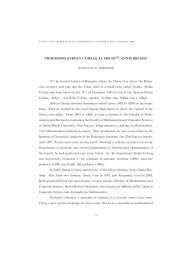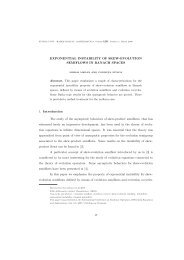CONTENTS
CONTENTS
CONTENTS
You also want an ePaper? Increase the reach of your titles
YUMPU automatically turns print PDFs into web optimized ePapers that Google loves.
TRANSFORMING PROCEDURAL INTO OBJECT-ORIENTED SOFTWARE SYSTEMS 187<br />
We have chosen the distance between two entities as expressed in Equation (1)<br />
because it emphasizes the idea of cohesion. As illustrated in [4], “Cohesion refers to<br />
the degree to which module components belong together”. Our distance, as defined in<br />
Equation (1), highlights the concept of cohesion. It is very likely that entities with<br />
low distances have to be placed in the same application class, and distant entities<br />
have to belong to different aplication classes.<br />
kOOS algorithm is a k-medois like algorithm that uses a heuristic for choosing<br />
the initial medoids.<br />
The entity chosen as the first medoid is the most “distant” entity from the set of<br />
all entities (the entity that maximizes the sum of distances from all other entities).<br />
At each step we select from the remaining entities the most distant entity relative<br />
to the already chosen medoids. If the selected entity is close enough to the already<br />
chosen medoids, then the process is stoped, otherwise the selected entity is added to<br />
the medoids list and we try to choose a new medoid from the remaining entities.<br />
We consider an entity close to a set of medoids if the distances between the entity<br />
and any of the medoids are less than a given threshold. We have chosen the value<br />
1 for the threshold because distances greater than 1 are obtained only for unrelated<br />
entities (Equation (1)).<br />
The idea of the above described heuristic is to choose medoids that will act as<br />
seeds for the clusters that will represent application classes in the resulted objectoriented<br />
system.<br />
After selecting the initial medoids, kOOS behaves like the classical k-medoids<br />
algorithm.<br />
The main idea of the kOOS algorithm that we apply in order to group entities<br />
from a software system is the following:<br />
(i) The initial number p of clusters and the initial medoids are determined by<br />
the heuristic described above.<br />
(ii) The clusters are recalculated, i.e., each object is assigned to the closest<br />
medoid. Empty clusters will be eliminated from the partition.<br />
(iii) Recalculate the medoid i of each cluster k based on the following idea: if h is<br />
an object from k such that <br />
(d(j, h) − d(j, i)) is negative, then h becomes<br />
j∈k<br />
the new medoid of cluster k.<br />
(iv) Steps (ii)-(iii) are repeatedly performed until there is no change in the partition<br />
K.<br />
Each cluster from the resulted partition will represent an application class from<br />
the equivalent object-oriented version of the software system S.<br />
We have successfully evaluated our approach on a simple code example written<br />
in Borland Pascal.<br />
3. Conclusions and further work<br />
We have presented in this paper a partitional clustering algorithm (kOOS) that<br />
can be used for assisting software developers in transforming procedural software



